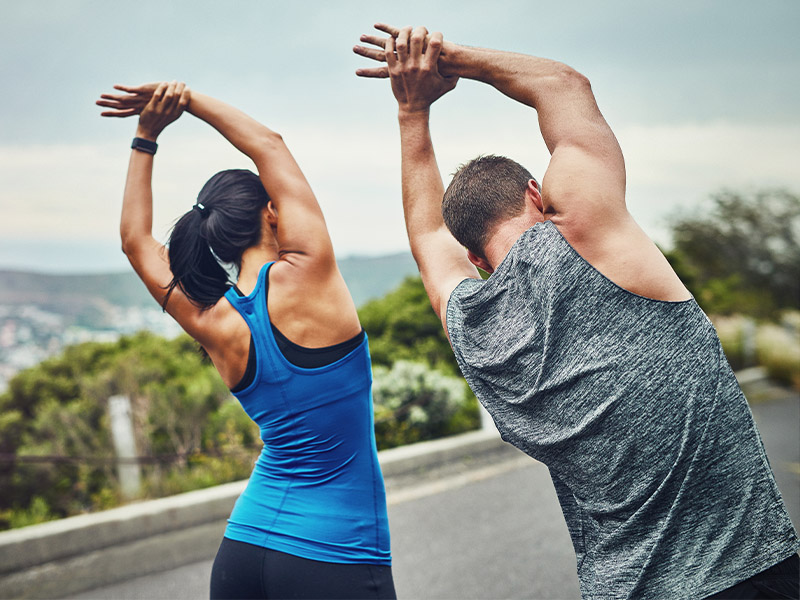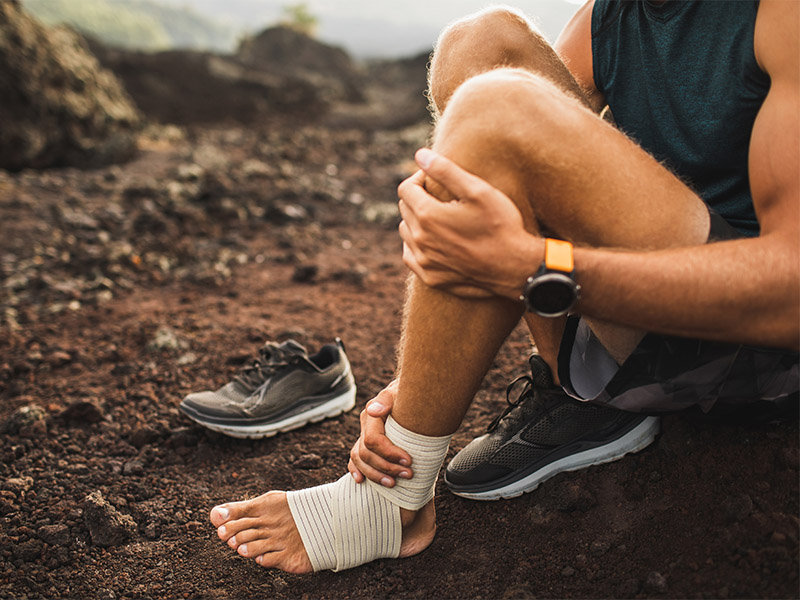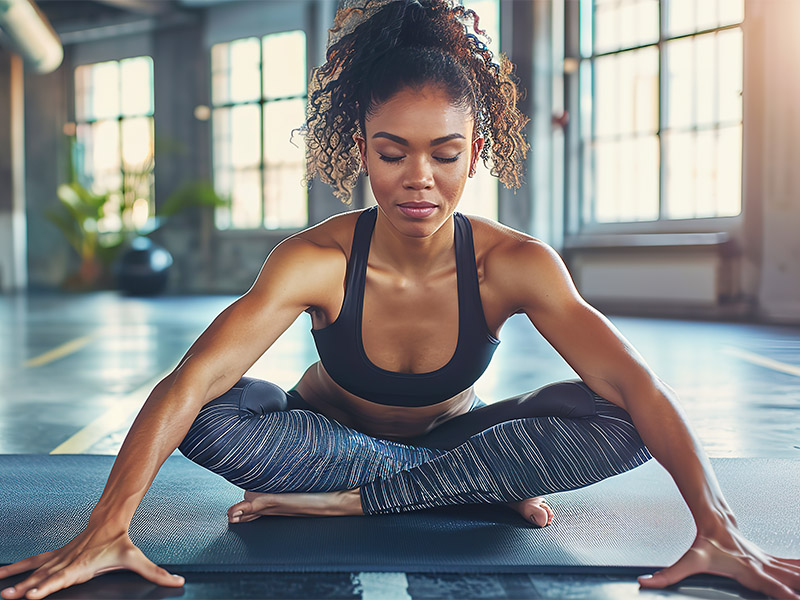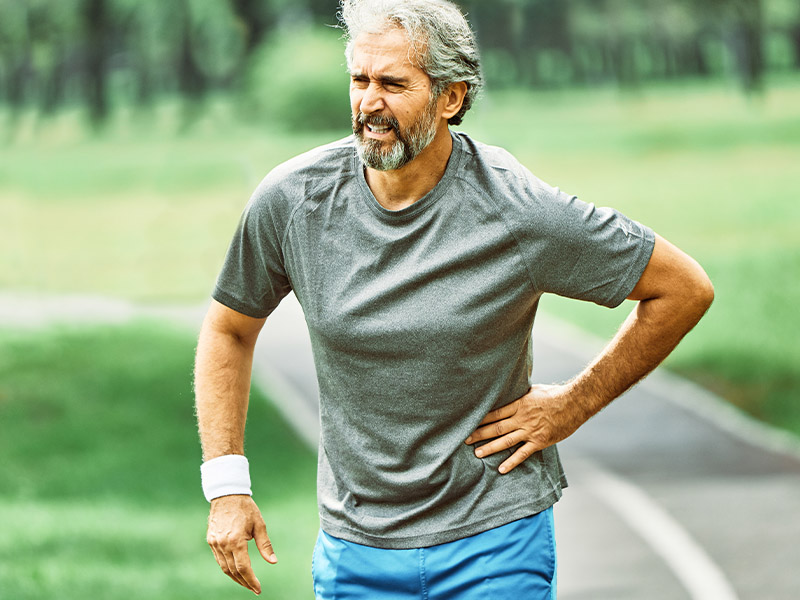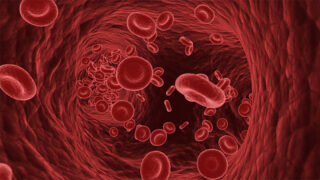If you exercise regularly, you may think you’re safe from common bone issues and joint pain. Think again! These doctors and orthopaedic surgeons in Singapore tell us how your exercise of choice may be causing low back pain, hip joint pain, or Achilles tendon or rotator cuff issues – and when it might be time to consider orthopaedic surgery.
#1 Frozen shoulders and rotator cuff problems
Those at higher risk: Athletes who are over 35 years old
Have you ever experienced stiff shoulders or shoulder joint pain and scratched your head because it seemed to have come out of nowhere? You might have what is commonly known as frozen shoulder or a rotator cuff problem.
“Shoulder pain and stiffness without injury is a common orthopaedic problem, especially for athletes over 35 years old,” explains DR YUNG SHING WAI, an orthopaedic surgeon in Singapore and the founder of SW Yung Orthopaedic, Foot and Shoulder Surgery. “A frozen shoulder presents as a gradually stiffening and painful shoulder. This occurs often without any obvious injury or just a minor sprain. A common symptom is that the patient finds it difficult to sleep and often wakes up with pain after sleeping on the affected shoulder.”
A frozen shoulder is a relatively benign condition that sometimes goes away on its own. Yet, Dr Yung warns it may take many months or even years before shoulder joint pain fully resolves. The most common treatment is a stretching programme with the aid of a physiotherapist. In some persistent cases, a keyhole surgical procedure is needed to loosen the joint. Sadly, there is no particular way to prevent a frozen shoulder. Once it happens, Dr Yung emphasises the importance of early diagnosis. Stretching also helps with shortening the duration of symptoms.
Meanwhile, the rotator cuff is a set of small muscles deep in the shoulder that can also give spontaneous shoulder pain. “There may be an injury that triggers it, but among many athletes, the pain can be gradual,” says Dr Yung. “The symptoms are often very similar to that of the frozen shoulder. One needs to seek medical advice and probably a scan to evaluate it.”
Rotator cuff problems result from a combination of age, overuse, degeneration and mechanical friction. They are most common in older athletes. In some shoulders, friction (impingement syndrome) occurs between the cuff tendon and the overlying bone. This can lead to erosion and even a tear of the tendon. Degenerative tears of the rotator cuff can also happen without injury or friction.
Proper stretching and warmup is crucial to achieve healthy bones and joints in the shoulders. Reassessing your sport of choice may be worthwhile, too. “One cannot change their age. But sometimes, a change in the type of sport or a modification of technique may help,” says Dr Yung. Treatment options for the rotator cuff depend on the severity. Tendonitis and bursitis, Dr Yung explains, can be treated non-operatively with physiotherapy, stretching and sometimes with cortisone injections. However, persistent pain and cuff tears usually require arthroscopic keyhole surgery to remove the bone causing friction or repair the torn tendon.
#2 Achilles tendon and heel pain
Those at higher risk: Jumpers and sprinters
“Heel pain is a very common orthopaedic problem. It occurs in two areas in particular – at the back of the heel, which is usually related to the Achilles tendon, and at the sole of the foot, commonly due to plantar fasciitis,” explains Dr Yung. “Heel pain is commonly associated with a tight calf, as this predisposes the Achilles tendon to overload and abnormal stress. This can result in a number of problems. They include Achilles tendonitis, Achilles tendon rupture, bursitis and painful bone spurs forming at the back of the heel.”
Achilles tendon problems happen most commonly in sports that involve jumping and sprinting. Tendonitis and degeneration are very common, as are the more catastrophic ruptures of tendon. While most of these problems start at around age 40, Dr Yung occasionally sees them in high-level competitive athletes under 30.
Additionally, Achilles tendon pain can be a result of causes off the sports field. “A tight calf is the most common aggravating factor. Other factors include overusing, being overweight, or having various other leg or foot problems,” says Dr Yung. As with most overuse injuries, the symptoms start with some heel pain.
As it gets worse, the pain may hit at the onset of an activity, or after prolonged activity. Finally, the pain may become so persistent and incapacitating that the patient is unable to continue with the sport or activity.
According to Dr Yung, there are ways to strengthen your Achilles tendon and prevent heel pain. “Inadequate warm-ups and stretching is very commonly found in patients,” says the orthopaedic surgeon in Singapore. “As one ages, it becomes particularly important to warm up and stretch before exercising. It’s also important to cool down and stretch after any activity. Over-training and overly aggressive ramping-up in training – for example, when preparing for a marathon – can also be a factor. The body needs time to adapt and react to increasing training intensity and frequency.”
#3 Low back pain and spinal joint pain
Those at higher risk: Golfers
Many of us are no strangers to the agonising plight of low back pain. This common orthopaedic condition can also affect athletes. “Golfers are particularly susceptible to low back pain. Studies have shown that approximately 18 to 54 percent of golfers experience low back pain at some point during their playing career,” reveals orthopaedic and spine consultant DR RAZMI RAHMAT from Avant Orthopaedics.
This is largely due to the repetitive and asymmetrical nature of swing mechanics. “Faulty swing mechanics, such as excessive spinal rotation, reverse spine angle, or an improper weight shift, can place excessive stress on the lumbar spine, leading to low back pain,” says Dr Razmi.
Couple that with weak abdominal muscles and tight hip flexors that can disrupt the natural stability of the lumbar spine, repetitive muscle strains, and pre-existing conditions that are exacerbated, and golfers might find themselves in the woes of low back pain.
Happily, there are steps to prevent and manage the condition effectively. Right at the top is – you guessed it – sufficient warm-up. “Prior to playing, golfers should engage in a warm-up routine that includes stretching exercises. They should target the hip flexors, hamstrings and rotational movements of the spine,” says Dr Razmi. “This helps improve flexibility and reduce the risk of injury. Strengthening the core muscles, particularly the abdominal and back muscles, can also enhance spinal stability and reduce the risk of low back pain.”
Similarly crucial for amateur golfers is working with an instructor who can analyse and correct your swing. Plus, learn proper techniques that emphasise balanced weight distribution throughout the swing. Don’t skimp on quality equipment, either! Dr Razmi recommends using clubs with appropriate shaft flex and grip size. He also suggests wearing supportive footwear to reduce unnecessary stress on the back.
When the pain hits, treatment options like physical therapy with target exercises, temporary rest, modification of golfing activities and over-the-counter pain relievers are worth considering. “If the pain persists, seeking medical advice and considering appropriate treatment options can help golfers return to the sport pain-free and enjoy their game to the fullest,” says Dr Razmi.
#4 Hip impingement and hip joint pain
Those at higher risk: Yogis, gymnasts and ballet dancers
Have you ever felt waves of unexpected pain that come with restricted motion of the hip, clicking of the hip and loss of hip function? You may be suffering from hip impingement.
As orthopaedic and sports injury consultant DR RAMESH SUBRAMANIAM from Avant Orthopaedics tells us, hip impingement – or femoroacetabular impingement – is a mechanical condition that occurs when the bones of the hip joint make abnormal contact upon each other or cause pressures on the supporting structures of the hip joint.
While hip joint pain affects both males and females from teenage years through to age 50 and above, this is more frequent in athletic and active people. That’s especially true for activities that require high hip flexion. These include weighted deep squats at the gym, full splits in yoga or gymnastics, burpees and certain movements in dance styles such as ballet. It’s also more common in Caucasian patients compared to Asian patients.
“A fibro-cartilaginous tissue called the labrum lines the hip socket, providing a fluid-seal over the femoral head to aid in its motion and stability,” explains Dr Ramesh. “In hip impingement, repeated crushing of this labrum tissue leads to tears. This destabilises the hip joint and leads to pain and cartilage damage of the hip, which is called arthritis.”
No, you don’t have to stop practising those splits or quit your dance classes just yet! But if you want healthy hip bones for years to come, Dr Ramesh suggests having the condition diagnosed as quickly as possible. “If left untreated, hip impingement and labral tears can present as arthritis in the later years of a patient, usually after the age of 50.
Thankfully, diagnoses are straightforward – usually requiring an x-ray and an MRI scan. Treatments include anti-inflammatory medication, physiotherapy and hip arthroscopic surgery.
Offered at Avant Orthopaedics, hip arthroscopic surgery is a less invasive way to solve hip problems that previously required large, open incisions. Utilising the arthroscopic approach and keyhole incisions, Dr Ramesh and his team can repair a torn labrum, reconstruct badly damaged labral tissue, and also resect bone which may be causing impingement.
#5 Patellofemoral pain syndrome
Those at higher risk: Cyclists, jumpers and runners
Also known as patellar malalignment syndrome, this condition affects about 23 percent of the population. It is especially common among athletes in activities with repetitive knee stress. Think runners, cyclers, jumpers, dancers and even skiers.
Triggered by factors like injuries or trauma to the knee, excessive training and muscular imbalance, this condition occurs when the kneecap (patella) fails to track correctly within the femoral groove during knee movement, explains DR PHILIP MCGRAW, an orthopaedic and trauma surgeon in Singapore from Avant Orthopaedics.
He tells us that our patella usually moves smoothly in the groove as the knee bends and straightens, held in place by the quadriceps muscles, tendons, ligaments and surrounding soft tissues. “However, in individuals with patellofemoral pain syndrome, there is an abnormal alignment or movement of the patella. This can lead to various symptoms, discomfort and potential complications,” he says.
Athletes or patients may feel pain at the front of the knee, exacerbated by activities like jogging, stair climbing, squatting or prolonged sitting. They may also experience popping or grinding sensations when moving their knee, as well as swelling, inflammation and even a troubling sense of instability that the knee may give way at times!
That’s why it is immensely important to seek accurate diagnosis and treatment as early as possible, according to this orthopaedic surgeon in Singapore. The former involves evaluating medical history, imaging studies, lab tests and physical examinations. Meanwhile, treatment involves “addressing the underlying factors contributing to the abnormal tracking of the patella”. Common approaches include physical therapy, patellar taping or bracing, orthotics, pain relief with NSAIDs, ice therapy and occasionally corticosteroid injections. Surgery is only considered for severe, refractory cases.
The good news? “The prognosis is generally favourable, especially with appropriate and timely treatment,” reassures Dr McGraw. “Regular follow-ups with healthcare professionals, ongoing self-management strategies, and a commitment to maintaining good knee health contribute to the overall positive prognosis.”
Directory
SW Yung Orthopaedic, Foot and Shoulder Surgery
#05-07 Mt Elizabeth Medical Centre, 3 Mount Elizabeth
6235 5225 or 8101 2002 | swyung.com
Avant Orthopaedics (Novena Branch)
#05-31 Mount Elizabeth Novena Specialist Centre, 38 Irrawaddy Road
6262 3616 |avantortho.com.sg
Avant Orthopaedics (Parkway Branch)
#04-06 Parkway East Medical Centre, 319 Joo Chiat Place
6970 8916 | avantortho.com.sg
If you liked this article on orthopaedic surgeons in Singapore and preventing joint pain, check out our Health & Fitness section for more stories like this.
This article first appeared in the September 2024 edition of Expat Living. You can purchase the latest issue or subscribe so you never miss a copy!
Don't miss out on the latest events, news and
competitions by signing up to our newsletter!
By signing up, you'll receive our weekly newsletter and offers which you can update or unsubscribe to anytime.

